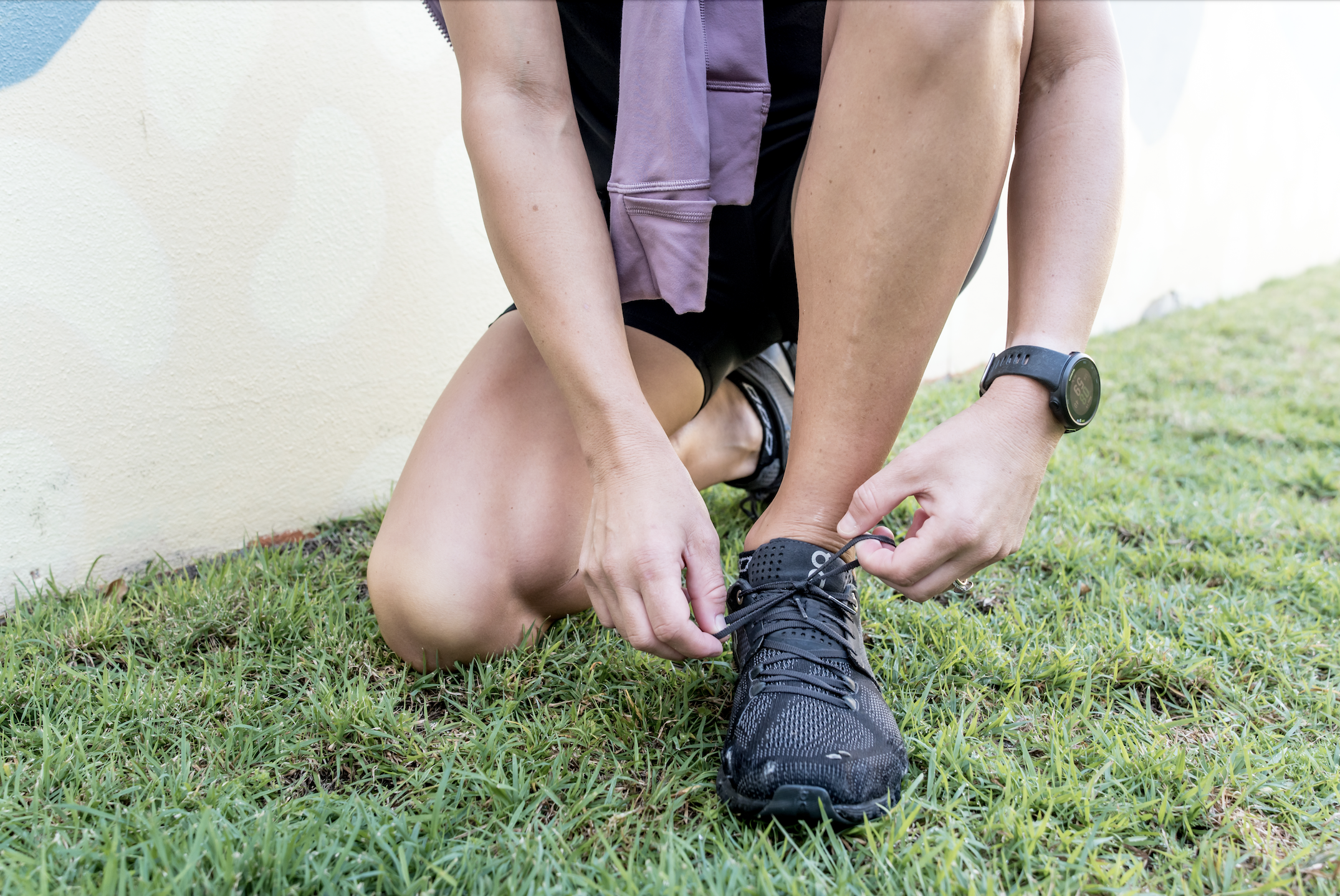Lower Limb Injury Prevention for Runners

CATEGORY: EXERCISE
Lower Limb Injury Prevention for Runners
The importance of hip abductor strength in runners.
Why are hip abductors so important for runners? They’re responsible for helping to control the hip during the gait cycle and for frontal plane control of the knee during ground contact of the gait cycle. They are also vital for the ability to stabilise ourselves during single leg balance exercises and tasks.
What are the hip abductors?
The hip abductors include a group of muscles located in the lateral thigh.
The primary hip abductors are:
- Gluteus medius
- Gluteus minimus
The secondary hip abductors are:
- Piriformis
- Sartorius
- Superior fibres of gluteus maximus
What is the function of the hip abductors?
This group of muscles are responsible for:
- Pelvic stabilisation – i.e. the standing leg hip abductors contract to stabilise the hip when the opposite leg is swinging. If the abductors are weak, the standing hip often drops or is unstable.
- Hip abduction – taking the leg away from midline
- Hip rotation
Issues that can result from weak hip abductors in runners:
Asymmetry between hip abductor strength has been proven to negatively impact running economy due to an increased compensatory muscle activation of other muscles. Metabolic cost is then driven up by an increase in muscle function over a greater excursion, therefore being less efficient and expending more energy.
Deficits in hip abductor strength also contribute to an increased risk of developing patello-femoral joint pain.
Even more reason to build those hip abductor muscles!
Exercises to build hip abductor strength:
Research with EMG has been done to find the best exercise to activate glute medius (one of our main hip abductors). I reference two studies – one was carried out in 2009 and another in 2011. The researchers in 2009 compared 12 exercises in 21 healthy adults to evaluate the best exercise for glute medius. They found that side lying hip abduction was the best of these exercises for the glute med, followed by a single leg squat and then a clam with internal rotation (not the traditional clam exercise).
This was a great study however, an even more comprehensive analysis was performed in 2011 assessing 22 different exercises. This study included most of the exercises from the 2009 study but also a lot more high-level exercises. They found that the side plank with hip abduction was the best exercise for recruiting the glute med (the leg on the ground works hardest). Second to this, was the side plank with hip abduction on the leg that is lifting.
From the above studies I have detailed the top exercises in order of effectiveness:
- Side plank with hip abduction

- Side lying hip abduction

- Single leg squat

- Clam with internal rotation

If you’re experiencing any issues with running or would like to have a running assessment to identify possible areas of weakness or factors that could enhance your performance, don’t hesitate to book an appointment with one of our physiotherapists. Please call our admin team on (07) 5474 9093 or alternatively, visit our website to book an appointment at a time that suits you.
References:
Bishop BN, Greenstein J, Etnoyer-Slaski JL, Sterling H, Topp R. Electromyographic Analysis of Gluteus Maximus, Gluteus Medius, and Tensor Fascia Latae During Therapeutic Exercises With and Without Elastic Resistance. Int J Sports Phys Ther. 2018;13(4):668-675.
Boren K, Conrey C, Le Coguic J, Paprocki L, Voight M, Robinson TK. Electromyographic analysis of gluteus medius and gluteus maximus during rehabilitation exercises. Int J Sports Phys Ther. 2011;6(3):206-223.
Distefano LJ, Blackburn JT, Marshall SW, Padua DA. Gluteal muscle activation during common therapeutic exercises. J Orthop Sports Phys Ther. 2009;39(7):532-540. doi:10.2519/jospt.2009.2796



Leave a Comments
You must be logged in to post a comment.